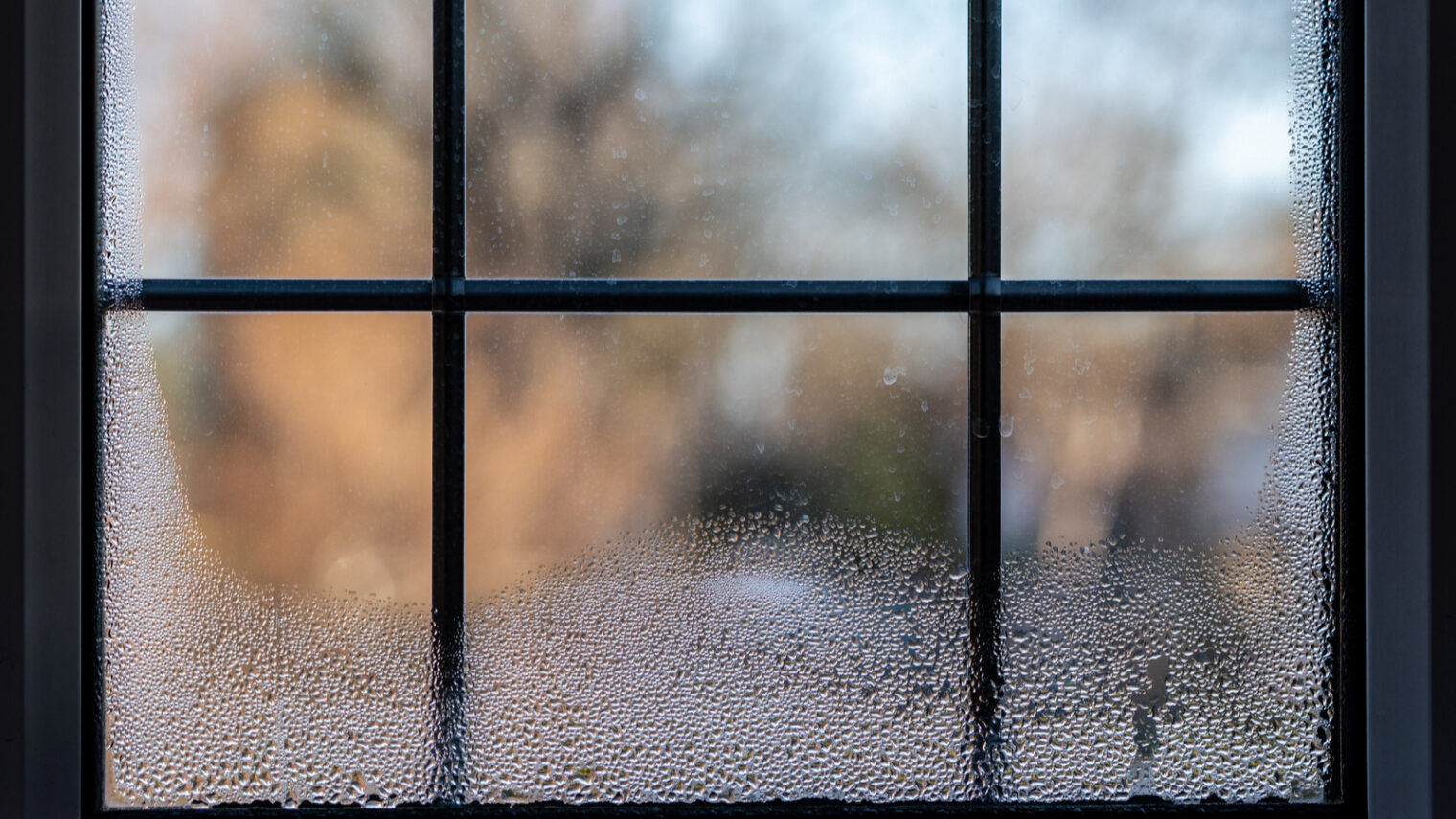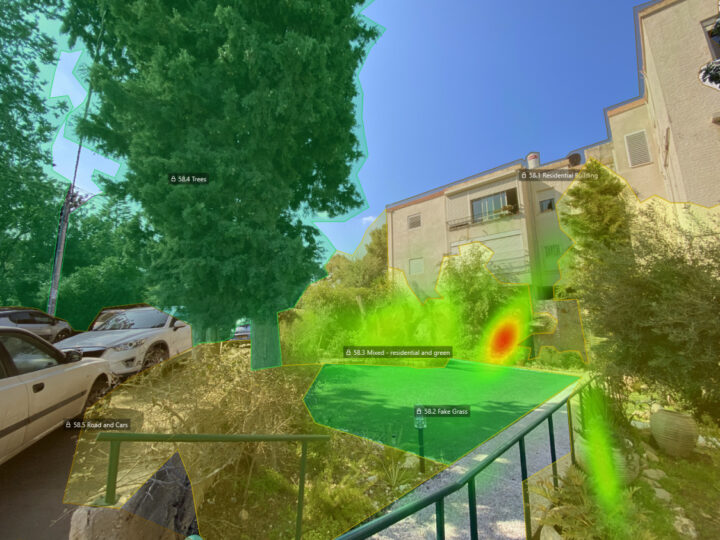Imagine if you could heat or cool your home just by plucking the desired comfort level out of the air. Literally.
Israeli startup ThermoTerra is turning that vision into a novel renewable energy system that harvests energy from fluctuations in humidity.
“Water vapor in the air that’s absorbed onto or into an absorptive material transfers a significant amount of energy,” explains ThermoTerra founder and CEO Dror Zchori.
We know this intuitively. When water evaporates, it causes a cooling effect. Think about the human body – when we’re hot, we produce sweat which, when it evaporates, keeps us from overheating.
When water vapor is absorbed or condenses on a material, the opposite occurs – it generates heat.
On a hot day, ThermoTerra’s technology brings ambient warm and dry air into a home or office. It is stored inside the insulation of the building’s walls — hempcrete, silica gel or wood wool insulation absorb humidity especially well, Zchor says. When the air subsequently evaporates, it absorbs energy and cools the building.
When temperatures are cooler, cold and humid air is brought in; as it’s absorbed, it warms the air, heating the home or office.
“It’s a natural phenomenon,” Zchori says.
The ThermoTerra system is controlled by sensors embedded in the walls. Smart algorithms monitor when to bring in hot or cold air and when to release it. The algorithms learn owner preferences and automatically adjust the temperature accordingly. They can also tap into external weather forecasts.
“If it’s very hot now but the system knows that in a week it will be cold, it can store water in advance,” Zchori says.
The need for new technologies like ThermoTerra is indisputable: Some 40 percent of the world’s building energy is spent on heating and cooling, and buildings represent 30% of the world’s energy usage.
Three components
To work its magic, ThermoTerra requires integrating a structure of ducts and conduits into a new wall. In existing buildings, a new façade with built-in insulation and ducts can be added to the walls.
This may take up a few inches, but the environmental impact and financial savings are significant: Zchori estimates that incorporating ThermoTerra technology into a building’s construction can reduce heating and cooling costs by half “and even to zero in some cases.”
A smart fan inserted into the wall, controlled by the algorithms, moves the hot or cold air around as required. This is the only part of the system that requires electricity.
ThermoTerra’s system is composed of three main components:
- Storage reservoir – special absorption material packed inside a wall with air channels designed for maximum air flow.
- A system of fans, ducts and dampers.
- ActiveMemBrain consisting of IoT smart sensors, the controller, algorithms and cloud computing.
Using special materials that can absorb a large amount of water, combined with the company’s patent-pending control system, ThermoTerra uses humidity variations to “charge” the insulation material – making it drier in winter or damper in summer – and then to force air through the material to release hot or cold air as necessary.
By constantly passing such ambient air through its system, ThermoTerra smooths out the peaks and troughs so that both temperature and humidity cycles are shallower, resulting in a more comfortable environment.
A real impact
Zchori came up with the idea for ThermoTerra when he was building his own green home in Amirim, a rural Galilee community known for its environmental consciousness and where ThermoTerra is now headquartered.
“I put in all the technology I knew to make a zero-energy home,” Zchori tells ISRAEL21c.
“The house was totally off the grid. I didn’t use any wood or any other energy. So, in the winter, I was cold.”
Zchori’s background in biotechnology, agriculture, mechanical engineering and green construction led him to realize that he could implement humidity cooling and heating using “natural, simple and available material, rather than rare elements or sophisticated materials we need to import.”
Zchori points out that if you leave a newspaper out in the sun, “it will become very dry and crunchy. If you put it in a ‘wet’ room, it absorbs a bit of humidity and becomes flexible again.”
This principle is common to all manner of materials. Traditional mud and clay buildings are very good at keeping the cold out and the heat in using humidity.
By tapping into the natural fluctuations in humidity, Zchori discovered he could increase the temperature in his home from 12 degrees Celsius (53.6 Fahrenheit) to 26 C (78.8 F).
Zchori’s house turned out to not be such a good proof-of-concept, he notes. “It’s a special house. I wanted to show that our approach could work on more common buildings, where we could make a real impact.”
A change in the world
Zchori founded ThermoTerra in 2015 with patent attorney Jeremy Rutman and data analysis expert Yonatan Nathan. The company employs five people.
Money has come from the Israeli Ministry of Energy, the Israel Innovation Authority and from the founders. The company is currently applying for an EU research grant.
ThermoTerra also received funding from the Quantum Hub accelerator of which Israeli air conditioning manufacturer Tadiran is a sponsor.
“We talked with their engineers about collaborating on reducing the amount of energy needed to solve their humidity problems,” Zchori says.
The team is passionate about what they’re doing.
“A very good programmer came to us early on,” Zchori says. “I said to him, we don’t have money to pay salaries. He said, ‘I’m not in interested in a salary. I’ve been working for years for a credit card company on AI that will make people buy more. I want to make a change in the world.’”
Harnessing humidity
Zchori estimates it will cost around $3,400 to get a 100-square-meter private home up and running with humidity fluctuation heating and cooling.
Added-value services will cover smoke and gas leak detection and indoor air pollution monitoring and filtering.
ThermoTerra won’t be designing its own insulation. “We don’t want to be the one to build the passive part of the system. So, we’ll collaborate with contractors,” Zchori says.
The company is now seeking such a collaboration, as it is in the product development phase with experiments in different parts of Israel.
Going forward, Zchori can imagine ThermoTerra being used to cool cars. “When a car is sitting in the sun, it gets hot. We can cool it using evaporative water that’s harvested overnight.”
Whether in a car, a home or someplace even Zchori hasn’t thought of yet, “cooling and heating is a basic need. We are giving the power to the people to make their houses self-cooling and self-heating.”
Click here for more information.

















